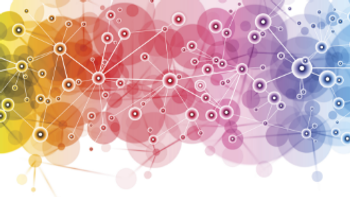
Spectroscopy Emerging Leader in Molecular Spectroscopy Award Presentation, Plenary Lecture, and Symposium
At SciX, Dmitri Kurouski of Texas A&M University will be recognized as the 2023 Spectroscopy Emerging Leader in Molecular Spectroscopy Award recipient. Here's a summary of the award session.
On the final full day of the SciX (The Great Scientific Exchange) 2023 conference in Sparks, Nevada, USA, the Spectroscopy Emerging Leader in Molecular Spectroscopy Award will be presented to Dmitri Kurouski, an associate professor of Biochemistry & Biophysics and Biomedical Engineering at Texas A&M University in College Station, Texas, USA.
Kurouski will be honored with a symposium during an afternoon session at the conference, which is presented by the Federation of Analytical Chemistry and Spectroscopy Societies (FACSS), on Thursday, October 12. Preceding that symposium, Kurouski himself will give a plenary lecture at 11:30 a.m. local time on the 12th, entitled “Structural Characterization of Biological Systems at Macro and Nanoscale Using Vibrational Spectroscopy.”
In that talk, Kurouski will discuss the complementarity of Raman and infrared (IR) spectroscopies when coupled to scanning probe microscopy (SPM) techniques, which allows investigation of the structures and compositions of biological systems with nanometer spatial resolution. According to Kurouski, this workflow helped uncover the secondary structures of amyloid oligomers, which can cause neurodegenerative pathologies such as Alzheimer’s and Parkinson’s diseases.
The symposium honoring Kurouski will commence at 1:30 p.m. and will feature five speakers. First up will be Andrea Centrone, a project leader in the Nanoscale Spectroscopy Group at the U.S. Department of Commerce’s National Institute of Standards and Technology (NIST) in Gaithersburg, Maryland, USA, presenting “Measuring Chemical Composition, Optical and Thermal Properties at the Nanoscale with AFM Probes.” Next at 1:50, Francesco Simone Ruggeri, an assistant professor at Wageningen University & Research, The Netherlands, will speak on “Nano-Chemical Infrared Imaging and Spectroscopy from Supramolecular Protein Aggregates to Single Polymer Chains.” Following that at 2:10, Zachary Schultz, a professor at The Ohio State University in Columbus, Ohio, USA, will present “Monitoring Chemistry on Plasmonic Nanoparticles.” At 2:30, Stephan Kupfer, a group leader in the Physical Chemistry Department at Friedrich Schiller University Jena in Thuringia, Germany, will give a talk entitled “Plasmon-Enhanced Raman Spectroscopy Assessed by a Holistic Quantum Mechanical Approach.” And finally at 2:50, Patrick El-Khoury, a senior research scientist at the Pacific Northwest National Laboratory (PNNL) in Richland, Washington, USA, will give the final lecture of the session, “Multimodal Spectral Nano-Imaging of Plasmonic Nanoparticles.”
The Spectroscopy Emerging Leader in Molecular Spectroscopy Award has been conferred since 2016 to recognize the achievements and aspirations of a talented young molecular spectroscopist who has made strides early in their career toward the advancement of molecular spectroscopy techniques and applications. The award is given to a researcher who has focused most of their work in the field of vibrational or electronic spectroscopy, with direct contributions to Raman, infrared, near-infrared, terahertz, fluorescence, or UV-vis spectroscopy through original research on the development or advancement of theory, instrumentation, measurement techniques, or applications. The winner must be within 10 years of receiving his or her PhD in the year the award is presented, and is chosen by an independent scientific committee.
The Thursday SciX sessions will conclude with the FACSS Innovation Award Finalists plenary session at 3:50 p.m.—the winner of that award will be announced Friday morning—followed by the SciX Gala, which is open to all attendees, on Thursday evening.
For the entire SciX 2023 schedule, including room locations and abstracts, go to
Newsletter
Get essential updates on the latest spectroscopy technologies, regulatory standards, and best practices—subscribe today to Spectroscopy.





